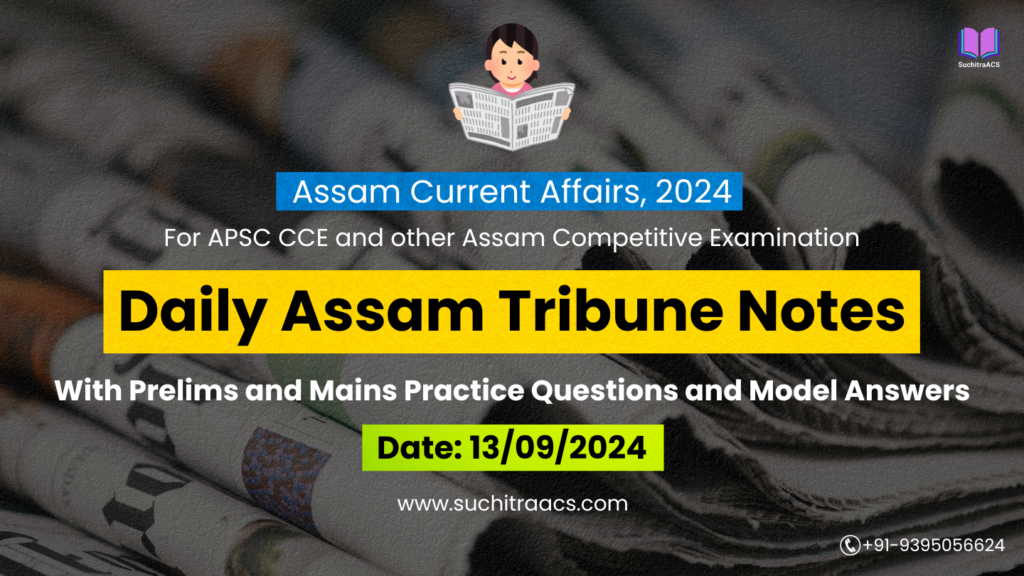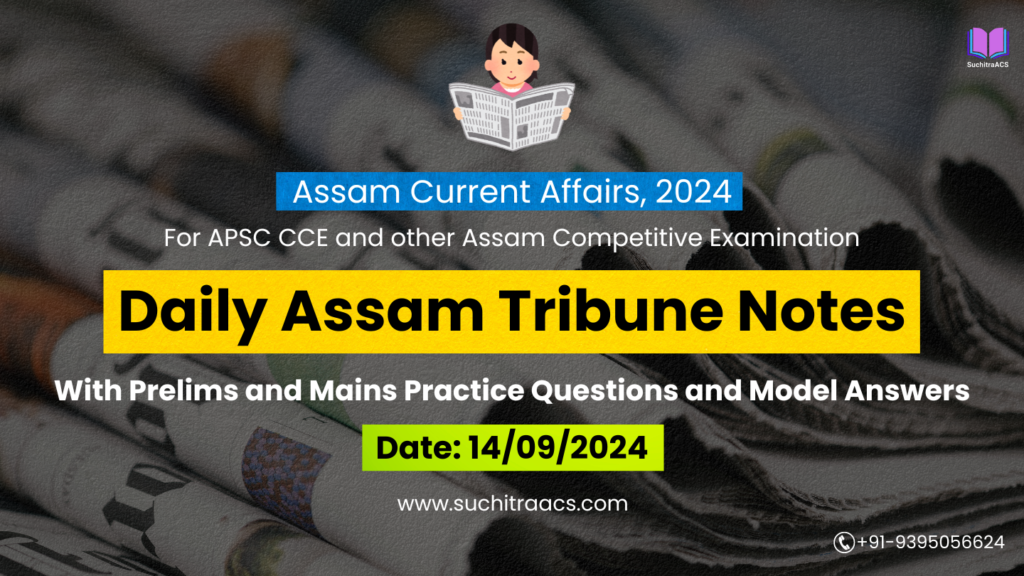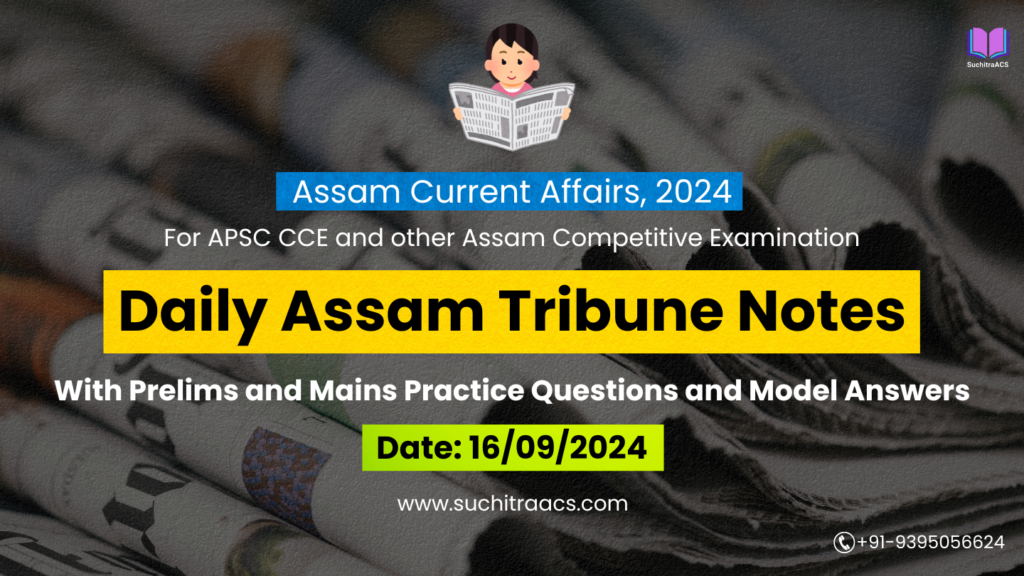1. Classical Language Status for Assamese
GS Paper II – Polity, Governance, and Cultural Heritage
Introduction:
The Union Cabinet, chaired by Prime Minister Narendra Modi, has conferred classical language status to Assamese along with Bengali, Marathi, Pali, and Prakrit. This recognition aims to preserve the rich linguistic heritage and promote the cultural identity of these languages.
Key Points:
- Benefits of Classical Language Status:
- Central government support for research, documentation, and digitization of ancient texts.
- Establishment of academic institutions focused on the language.
- Job creation in sectors such as archiving, translation, and publishing.
- Criteria for Classical Status:
- High antiquity of early texts or recorded history (over 1,500 years).
- A body of ancient literature considered valuable heritage.
- The literary tradition must be independent, not borrowed from another community.
Prelims Focus:
- Classical Language Status: The criteria for declaring a language as classical.
- List of classical languages in India: Tamil, Sanskrit, Kannada, Telugu, Malayalam, Odia, and newly added Assamese, Bengali, and others.
Mains Focus:
- Cultural Preservation: The role of classical language status in preserving Assamese heritage.
- Governance: Government policies aimed at promoting and preserving languages.
- Challenges: Documentation of ancient texts and the implementation of government grants.
Conclusion:
The recognition of Assamese as a classical language is a significant step in preserving its cultural heritage, ensuring that future generations have access to the rich history and literature of Assam.
2. Auction of Assam Government Securities
GS Paper III – Indian Economy, Public Finance
Introduction:
The Government of Assam has initiated the sale of state government securities (Assam Government Stock) amounting to ₹750 crore through an auction. The objective is to raise funds for various developmental projects, infrastructural improvements, and other public services in the state.
Key Points:
- Government Securities: These are bonds issued by the state government to finance public expenditure. Investors, including banks and institutional investors, can bid in the auction.
- Interest Rates: The interest rates, also known as the coupon rates, are decided through the auction process.
- Maturity Period: The maturity period of these bonds will be 10 years from the date of issue.
Prelims Focus:
- The concept of government securities (G-Secs) and their role in state financing.
- The auction process for state government securities.
Mains Focus:
- Public Finance: The importance of government securities in financing state development projects.
- Economic Implications: How raising funds through bonds impacts public expenditure and economic growth.
- Challenges:
- Managing state debts while ensuring long-term fiscal sustainability.
- Balancing public sector borrowing with private investment needs.
Conclusion:
The auction of Assam Government Securities is a strategic move to raise funds for development projects while managing the state’s fiscal deficit. This financial tool provides the state with essential liquidity for long-term infrastructural investments.
3. Assam Government’s Tourism Development Plan
GS Paper III – Economic Development, Tourism, and Infrastructure
Introduction:
The Assam Government has introduced a new Tourism Development Plan aimed at boosting eco-tourism, cultural tourism, and heritage tourism across the state. This plan is expected to attract domestic and international tourists and promote Assam’s unique cultural and natural heritage.
Key Points:
- Eco-Tourism Focus: The plan prioritizes the development of wildlife sanctuaries, national parks, and forests as eco-tourism destinations.
- Cultural and Heritage Tourism: Focus on promoting Assam’s rich cultural heritage, including Sattriya dance, Bihu, and the Ahom architectural legacy.
- Infrastructure Development: Emphasis on building roads, improving tourist facilities, and enhancing connectivity to tourist spots.
Prelims Focus:
- Eco-tourism: Concept and importance for Assam’s national parks and wildlife sanctuaries.
- Key cultural attractions in Assam: Bihu, Sattriya, and historical sites related to the Ahom dynasty.
Mains Focus:
- Tourism and Economic Growth: The role of tourism in contributing to Assam’s GDP and generating employment opportunities.
- Sustainable Tourism: Balancing tourism development with the need to protect Assam’s biodiversity and cultural heritage.
- Challenges:
- Infrastructure bottlenecks, especially in remote areas.
- Ensuring environmental sustainability while promoting mass tourism.
Conclusion:
The Tourism Development Plan by the Assam Government presents an opportunity to revitalize the state’s tourism sector. With a focus on eco-tourism and cultural heritage, the plan seeks to promote sustainable tourism that benefits the economy while preserving Assam’s natural and cultural assets.
4. Green Assam Initiative
GS Paper III – Environment, Conservation, and Climate Change
Introduction:
The Green Assam Initiative was launched with the objective of planting trees across the state to enhance its green cover and combat climate change. This initiative aligns with the global movement to reduce carbon footprints and promote sustainable development.
Key Points:
- Afforestation Drive: The initiative focuses on planting indigenous species across degraded lands and urban areas.
- Carbon Sequestration: Tree plantation efforts aim to capture carbon dioxide from the atmosphere, helping to mitigate the effects of climate change.
- Community Participation: Local communities, students, and non-governmental organizations (NGOs) are actively involved in the tree-planting campaigns.
Prelims Focus:
- The concept of carbon sequestration and its role in climate change mitigation.
- Afforestation: Benefits and objectives of large-scale tree planting initiatives.
Mains Focus:
- Environmental Conservation: How afforestation projects like Green Assam can help restore degraded ecosystems and enhance biodiversity.
- Climate Change Mitigation: The role of tree plantation in reducing the impact of global warming.
- Challenges:
- Ensuring the survival of planted saplings in harsh climatic conditions.
- Long-term maintenance and protection of afforested areas.
Conclusion:
The Green Assam Initiative is a crucial step towards enhancing Assam’s green cover and contributing to the global fight against climate change. Through community participation and sustainable planning, this project can ensure long-term environmental benefits for the state.
APSC Prelims Practice Questions
1. Which of the following is a direct benefit of granting classical language status to Assamese?
(a) Mandatory inclusion of the language in school curriculums
(b) Central government funding for research and promotion of the language
(c) Automatic increase in the number of Assamese speakers
(d) Compulsory translation of all government documents into Assamese
Answer: (b) Central government funding for research and promotion of the language
Explanation:
The classical language status provides central government support for research, documentation, and promotion of the language, including the preservation of ancient manuscripts and literary works. It does not mandate the inclusion of the language in school curriculums or the translation of all government documents.
2. Which of the following is a key focus of the Assam Government’s new Tourism Development Plan?
(a) Establishing new mining projects
(b) Promoting eco-tourism and cultural heritage tourism
(c) Expanding industrial zones
(d) Developing oil refineries in protected areas
Answer: (b) Promoting eco-tourism and cultural heritage tourism
Explanation:
The Tourism Development Plan of Assam focuses on promoting eco-tourism, particularly in wildlife sanctuaries and national parks, as well as cultural tourism, which highlights Assam’s rich heritage, including Bihu and Sattriya dance forms.
3. What is the main environmental benefit of the Green Assam Initiative?
(a) Reducing the state’s population growth
(b) Encouraging coal mining for economic development
(c) Increasing Assam’s green cover to mitigate climate change
(d) Replacing agricultural land with industrial zones
Answer: (c) Increasing Assam’s green cover to mitigate climate change
Explanation:
The Green Assam Initiative focuses on afforestation by planting indigenous tree species across degraded lands to increase Assam’s green cover. This initiative is aimed at mitigating climate change by capturing carbon dioxide and promoting environmental sustainability.
4. The auction of Assam Government Securities amounting to ₹750 crore is primarily aimed at:
(a) Encouraging private sector investment
(b) Raising funds for developmental projects and public services
(c) Increasing the state’s foreign exchange reserves
(d) Promoting corporate investments in Assam’s oil sector
Answer: (b) Raising funds for developmental projects and public services
Explanation:
The auction of Assam Government Securities is aimed at raising funds for the state’s developmental projects, including infrastructure improvements and public services. It is a common financial tool used by governments to manage public expenditure and investment.
5. Which of the following is NOT a key challenge for the establishment of Compressed Biogas (CBG) plants in Assam?
(a) Public awareness and participation
(b) Technological advancements in biogas production
(c) Limited availability of organic waste
(d) Infrastructure development for waste collection
Answer: (c) Limited availability of organic waste
Explanation:
Organic waste such as agricultural residue and cattle dung is abundant in Assam, so it is not a challenge for the establishment of CBG plants. However, public awareness, infrastructure, and technology are key challenges in the successful implementation of these projects.
APSC Mains Practice Question
Question:
“Discuss the significance of Assam’s Green Assam Initiative in combating climate change and promoting environmental sustainability. What are the key challenges in implementing large-scale afforestation programs, and how can they be addressed?”
(Answer in 250 words)
Model Answer:
Introduction:
The Green Assam Initiative is a state-driven afforestation program aimed at increasing Assam’s green cover to tackle climate change and promote environmental sustainability. It involves large-scale tree planting across degraded lands and urban areas, with a focus on carbon sequestration and restoring biodiversity.
Significance of the Green Assam Initiative:
- Climate Change Mitigation: Tree plantations help capture carbon dioxide from the atmosphere, acting as natural carbon sinks and reducing the state’s carbon footprint.
- Restoration of Ecosystems: Afforestation efforts can help restore degraded ecosystems, improve soil quality, and support biodiversity.
- Sustainable Development: By promoting afforestation, Assam aligns with global climate goals while ensuring that the state develops sustainably without compromising the environment.
- Community Participation: The program encourages local communities and NGOs to actively engage in tree planting, fostering a sense of environmental stewardship.
Challenges in Implementing Large-Scale Afforestation:
- Survival Rate of Saplings: Harsh climatic conditions and inadequate post-planting care can reduce the survival rate of planted saplings.
- Infrastructure and Funding: Ensuring proper infrastructure for planting and maintenance, as well as securing consistent funding, are major challenges.
- Land Availability: Identifying and acquiring suitable land for afforestation, especially in urban areas, can be difficult.
- Long-Term Maintenance: Afforestation projects require sustained monitoring and maintenance to ensure long-term environmental benefits.
Suggestions:
- Public Awareness Campaigns: Increasing public awareness about the importance of tree planting and climate action can boost community involvement.
- Government Incentives: Providing financial incentives and technical support to local communities and NGOs can help in the effective implementation of the program.
- Monitoring Mechanisms: Setting up systems to track the progress of plantations and ensure that saplings are maintained and protected from environmental threats.
Conclusion:
The Green Assam Initiative is a critical step in Assam’s effort to combat climate change and restore its natural ecosystems. With the right infrastructure, community participation, and long-term support, the program can significantly contribute to environmental sustainability and help the state achieve its climate goals.
✨ Looking for top-quality APSC online coaching at an affordable price?

🔔 Join Our WhatsApp Study Group!
For exclusive access to premium quality content, including study materials, current affairs, MCQs, and model answers for APSC CCE and other Assam competitive exams.
Click here to join: SuchitraACS Study WhatsApp Group
📚 Want to know more about SuchitraACS’s most affordable courses?
Click here to know more: SuchitraACS Courses for APSC CCE and Assam Competitive Examinations




